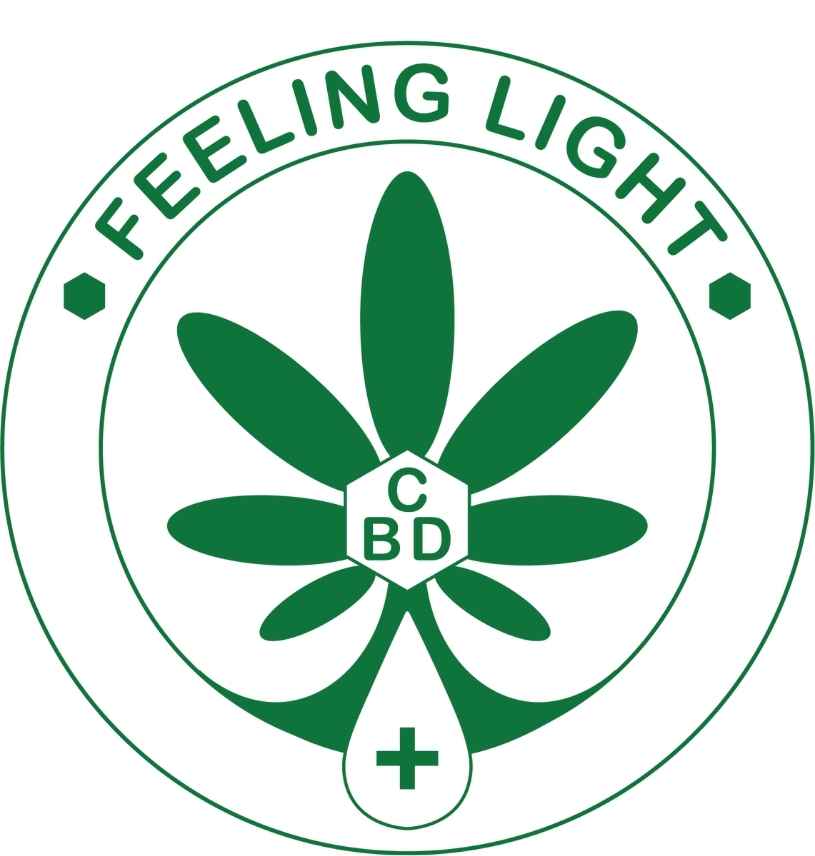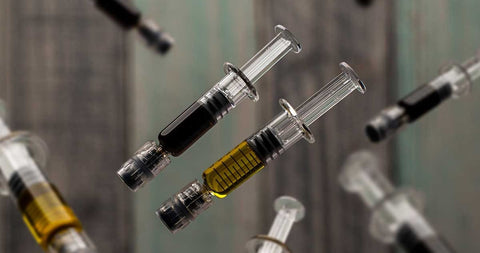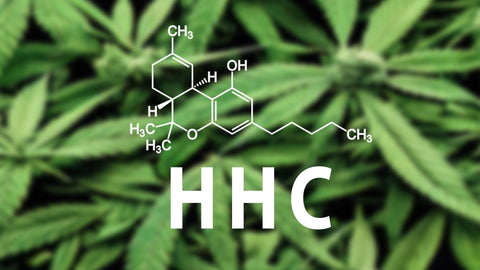As the demand for CBD products increases, so does the need for quality extraction methods that maintain the purity and potency of this valuable compound.
With different forms of CBD available on the market today, including oil, flowers, resin, capsules, it is essential to understand how they are extracted and their quality standards.
In this article, we will explore the three main CBD extraction methods: oil-based extraction, solvent-based extraction, and supercritical CO2 extraction, highlighting their strengths and weaknesses. We'll also see why supercritical CO2 extraction is considered by many experts to be one of the best ways to extract pure, potent CBD oil while maintaining environmental sustainability - buckle up!
CBD Oil Extraction Methods

The first extraction method is cold. This technique involves pressing the flowers or leaves of the cannabis plant to extract the liquid without using heat. This method has the advantage of being simple and natural since it does not require solvents or other chemicals to be carried out. However, this method generally yields a small amount of oil with fewer cannabinoids than other methods.
The second method is the solvent method which consists of using solvents such as carbon dioxide (CO2) or ethanol to extract beneficial molecules from cannabis such as CBD and terpenes by eliminating anything that is not necessary such as residual plant material. This technique also allows producers to further attenuate their production according to their preferences in terms of desired final effects, making this option more versatile.
Finally, the third method known as supercritical extraction involves a more advanced process using CO2 under high pressure and temperature in order to improve the capture of beneficial components during the process without adding any additional additives also ensuring the highest possible quality for the CBD extract. In addition, it allows producers to precisely control the desired effects thanks to its high efficiency.
In the next paragraph, we will compare these extraction methods in terms of advantages and disadvantages in order to help you choose the extraction method that best suits your needs.
Extraction of CBD by cold pressing
Cold press CBD extraction is a relatively simple and popular method for extracting CBD oil. This method involves applying pressure to plant material, such as hemp flowers or leaves, to extract the oil.
This method is ideal for small producers who wish to make artisanal quality oils in small quantities. It also allows the extraction of other beneficial components such as terpenes, but this method does not extract all the cannabinoids present in the plant.
The main advantage of this method is that it uses natural products and does not need chemical solvents such as carbon or methanol to produce the final extract. This means that little residue remains in the final oil. In addition, this method better preserves the therapeutic properties of cannabidiol (CBD) as well as those of other active molecules present in the plant.
However there are some drawbacks associated with this technique: it is less efficient than the supercritical CO2 extraction method and may require significantly more raw materials to achieve the same yield. The resulting oils may be a little less potent and also have a more intense taste, which may be unpleasant for some people.
In short, if you are looking for a simple and natural way to extract your own CBD oil at home with little initial financial investment, then cold press extraction is a method to consider. However, if you are looking for the highest quality oil possible and are willing to spend more to get there, you are better off opting for the supercritical CO2 extraction method or another professional extraction method that uses solvents to extract the molecules. of CBD.
CBD Solvent Extraction
Solvent extraction of CBD is a common method for producing cannabinoid-rich oils. This method involves soaking plant material in a solvent, usually CO2 or ethanol, which extracts cannabinoids and other beneficial molecules from the plant.
This method can be carried out cold or hot, with variable extraction times depending on the solvent used. Using a solvent allows producers to obtain higher quantities of active molecules than other methods, but it can also result in toxic residues in the final product if not done correctly.
It is important that growers strictly follow proper protocols when using this method to avoid possible contamination with chemical residues. However, this method also offers great flexibility and allows producers to create different types of oils containing various terpenes and cannabinoids to achieve different therapeutic effects.
Ultimately, the choice between solvent extraction and other methods will depend on the producer's intended purpose as well as the desired final quality of the product. It is therefore essential for any CBD oil manufacturer wishing to use this method that they take all the necessary precautions in order to obtain a healthy and safe product.
Comparison of CBD extraction methods
There are three main methods of CBD extraction: oil-based extraction, solvent extraction, and supercritical CO2 extraction. Each method has its advantages and disadvantages which must be taken into account to choose the most appropriate for your use.
Oil-based extraction is a simple method of gently heating the raw material in vegetable oil (such as olive oil) to extract the plant's cannabinoids, terpenes and other beneficial properties. This method makes it possible to obtain high quality products with minimal residue but it remains less effective than other methods.
Solvent extraction involves using liquids such as carbon or lethanol to extract beneficial molecules from cannabis. This method can produce rapid results, but there is a high risk of contamination and unwanted residues in the final product.
The supercritical CO2 method is considered the most effective and safe. However, it requires expensive equipment as well as advanced technical skills. However, thanks to its natural process without residue or contamination among other interesting ecological advantages, this technique is now widely used by expert producers and those passionate about CBD.
In all cases, it is important to choose a method that will obtain an oil containing all the desired properties while minimizing the presence of undesirable substances such as residues and other contaminants that could be harmful to our health. For this, it is recommended to choose the highest quality material possible.
Advantages and Disadvantages of Cold Press Extraction
Cold-pressed CBD extraction is a gentle and natural extraction method that produces an oil rich in cannabinoids, terpenes and other molecules beneficial to health. This method involves cold pressing hemp flowers and leaves to extract the liquid oil they contain.
The advantages of this method are numerous. First of all, it does not require the use of solvents or chemicals, making it more environmentally friendly than other extraction methods. Additionally, the process is simple and can be done with inexpensive equipment, making it accessible to small producers.
However, there are also some downsides to consider. One of the main drawbacks is that this method is not as effective as solvent or supercritical extraction methods for obtaining a high yield of CBD. Additionally, the low temperatures used in the process may not extract all of the molecules present in the plant material.
In short, cold press extraction remains a good option for those looking to produce natural CBD oils with a low environmental impact and without the use of harmful chemicals. However, if you are looking for a product with a higher concentration of cannabinoids or simply want to get a better yield from the residue left in the plant after extraction, you may want to consider other methods.
Advantages and Disadvantages of Solvent Extraction
Solvent extraction is a common method for extracting CBD oil from the raw materials of the cannabis plant. This technique involves using a solvent such as ethanol or carbon dioxide to extract cannabinoids and terpenes from the plant. Although effective, this method also has some disadvantages.
Benefits:
-
Solvent extraction allows for a large number of different molecules to be obtained at the same time, which can result in more comprehensive and beneficial results.
-
The products obtained can have specific effects thanks to the natural presence of other cannabis compounds such as terpenes and other minor cannabinoids.
-
The process is simple and easily reproducible.
Disadvantages:
-
The choice of solvents may be limited because they must be safe for human consumption, narrowing the range of options available.
-
Some residues may remain in the final product if the process is not properly carried out or controlled, potentially rendering the products undesirable or potentially hazardous to health.
-
Using this method creates a large amount of carbon (CO2) related emissions, thereby contributing to global warming.
Ultimately, it is important to know how to choose your extraction method wisely based on your desired end product: premium quality, high purity, and maximum efficiency. The decision between solvent extraction or otherwise will largely depend on your goals and business needs.
The Best CBD Oil Extraction Method
There are different methods for extracting CBD oil from the hemp plant. But what is the best extraction method? The answer depends on the advantages and disadvantages specific to each method.
The CO2-based supercritical extraction method is often considered the most effective and safe, as it uses a natural, non-toxic solvent (carbon dioxide) to extract cannabinoids, terpenes, and other beneficial molecules from cannabis. This also allows for precise and controlled production of oils at the molecular level, ensuring their quality.
Extraction by cold pressing or the use of a vegetable oil such as olive oil are other common options but less effective in terms of quantity and quality of the final products obtained. These methods can still provide some benefits related to the medicinal properties of cannabidiol (CBD), but the yield will often be lower with more residue remaining in the final liquid.
Extraction by solvents such as ethers, ethanol or butane can also be used to produce CBD-rich oils. However, these processes require special expertise to avoid any unwanted residues in the final product that could have a harmful effect on our health.
In summary, if you are looking for a simple but effective method to obtain a pure product that has retained all the therapeutic properties of cannabis without toxic risk or environmental harm, then opt for supercritical CO2-based extraction. Conversely, if you are looking for a more economical or less expensive method to produce your own oil at home, use methods like edible oil extraction instead. Whichever method you choose, it is essential to choose the right raw materials and consider all factors to achieve a superior final product.
Factors to consider when choosing extraction method
The choice of extraction method depends mainly on the final quality you are looking to obtain and the raw materials you have at your disposal. If you are looking for an oil rich in terpenes and flavors, cold press extraction may be a good choice. However, if you want an oil with a higher concentration of cannabinoids like CBD, it is best to use methods that extract them efficiently.
The amount of residual products in your oil is also something to consider when choosing the extraction method. For example, using a solvent like ethanol or supercritical CO2 can result in residue in the final product if not properly removed during the process.
It is also important to consider the costs associated with the choice of extraction method as well as the technical requirements for carrying out these processes. Supercritical CO2 extraction is often considered the best option for producing pure, concentrated cannabinoid oil but requires complex and expensive equipment.
Finally, it should always be remembered that it will be necessary for all products to comply with local regulations before being placed on the market. Legislation surrounding cannabis is strict depending on each country and particular attention must be paid to the THC content so that it meets the required standards.
How to choose the most suitable extraction method for your use
With all the extraction methods available, it can be difficult to know which one to choose for your own use. The first step is to determine what your needs and goals are for the final product. If you are looking for pure, natural CBD oil without solvent residue, the cold press extraction method is a good choice.
However, if you are looking for a more efficient method to extract a cannabinoid-rich concentrate like CBN or CBG with intact terpenes and flavonoids, the solvent extraction method would be more suitable. In this case, be sure to choose a safe and environmentally friendly solvent such as ethanol or CO2.
If you want to obtain a highly concentrated final product in CBD with a complete cannabinoid and terpene profile while avoiding solvent residues and other impurities, supercritical CO2 extraction is considered the best method currently available on the market.
Ultimately, the choice of method will also depend on the type of plant used (flowers vs. plant materials), the cost and time involved in the process as well as local regulations regarding cannabis products. It is always wise to obtain professional advice before any major investment in your own CBD oil manufacturing to ensure the final quality of the product.
CBD oil extraction with edible oil
Another method of extracting CBD oil is the edible oil method. This method involves infusing plant material with olive oil or another edible oil to extract cannabinoids, terpenes and other beneficial molecules.
This method is also known as infusion extraction and can be done at home with simple ingredients. It produces a CBD-rich oil that can be used in various products such as food, drinks and cosmetics.
One of the advantages of this method is that it is relatively simple and inexpensive because it uses common ingredients that you can find in your own kitchen. However, it also has some drawbacks, including that it does not always produce a final liquid as concentrated in CBD as professional methods such as supercritical CO2 extraction.
Additionally, this method often leaves solid residues in the final product which may have an unpleasant taste or alter the quality of the product. You should therefore be vigilant when using this method at home to avoid these unwanted residues. In any case, the choice between different methods must be taken into account to achieve the desired effect on our health.
Steps to extract CBD oil with edible oil
Extracting CBD oil with an edible oil is one of the simplest methods to obtain a very pure and aromatic final product. This method involves infusing flowers and other cannabinoid-rich plant materials in a vegetable oil such as olive oil or coconut oil. Here are some simple steps to follow:
-
Choosing an organic vegetable oil: For this method, you need a edible oil rich in unsaturated fatty acids which will allow cannabinoids such as CBD (cannabidiol) and terpenes (which give the plant its aroma) to dissolve easily in oil.
-
Gently heat oil in a saucepan: Pour your favorite vegetable oil into a saucepan and heat it gently for a few minutes over medium heat until slightly hot but not boiling.
-
Add the flowers or raw material: Next add your flowers or raw material to the hot oil mixture while stirring regularly for about 30 minutes.
-
Leave to cool then filter: Remove the pan from the heat after 30 minutes, let the mixture cool slightly before putting in a filter to separate all the impurities.
It is important here to note that this method may take longer than some other methods such as the supercritical method, but the resulting products are of excellent quality. This method is also one of the cheapest methods for extracting CBD oil and can be done at home using common tools.
It is essential to use high quality plant materials and good timing in extracting them to achieve the best possible results. The advantages of this technique include that it is safe, easy to perform at home, while
Advantages and disadvantages of extracting with edible oil
Extracting CBD with edible oil is a relatively simple and popular method for producing CBD oil at home. This method involves infusing hemp in a vegetable oil, such as olive oil, to extract cannabinoids, terpenes and other beneficial molecules. This method is often preferred because it uses simple, common ingredients that we all have in our kitchen.
The main advantages of this method are that it is inexpensive, easy to perform at home, and produces a relatively pure extract without the use of chemical solvents or sophisticated equipment. Additionally, by using a edible oil such as olive oil or coconut oil for example, you can also benefit from the nutritional benefits associated with these oils.
However, there are also some drawbacks worth noting. Firstly the quality of the final product can vary considerably depending on the type and quality of the plants used as well as the length of time they have been infused in the oil. Then, this method is not as effective at extracting all the molecules present in hemp as supercritical or CO₂ methods could do, but is rather suitable for obtaining a simple extract with low concentrations of cannabidiol (CBD). Finally, the main disadvantage remains that even after filtering your final mixture several times to remove plant matter, there may still be residues of solvents or other impurities in the final liquid.
In conclusion, extracting with edible oil is a simple and inexpensive method to produce CBD oil at home. It is particularly suitable for people wanting a final product with a low concentration of cannabinoids but remains less effective in obtaining a very pure and concentrated extract than the methods used.
Conclusion: Which CBD oil extraction method to choose?
After exploring the different CBD oil extraction methods, it's clear that each has its own advantages and disadvantages. The most effective and safest method is undoubtedly supercritical CO2 extraction, which produces pure, high-quality CBD oil with minimal use of hemp.
However, this method requires complex and expensive equipment, making it less accessible to small producers. Cold press extraction can also be a good option for those looking for a more natural process, but it may not produce as much THC or other cannabinoids as solvent-based extractions.
Ultimately, choosing the right method depends on your specific needs and priorities. If you are looking for a high-quality product free from harmful residues or chemicals such as carbon dioxide or ethanol-based solvents used in supercritical and solvent-based extractions respectively, these advanced techniques are the best choice. On the other hand, if you want to ensure that there are no chemical residues left in your final product, vegetable oil extraction could be an alternative option while still producing super terpene-rich CBD extra virgin olive oils. tasty.




